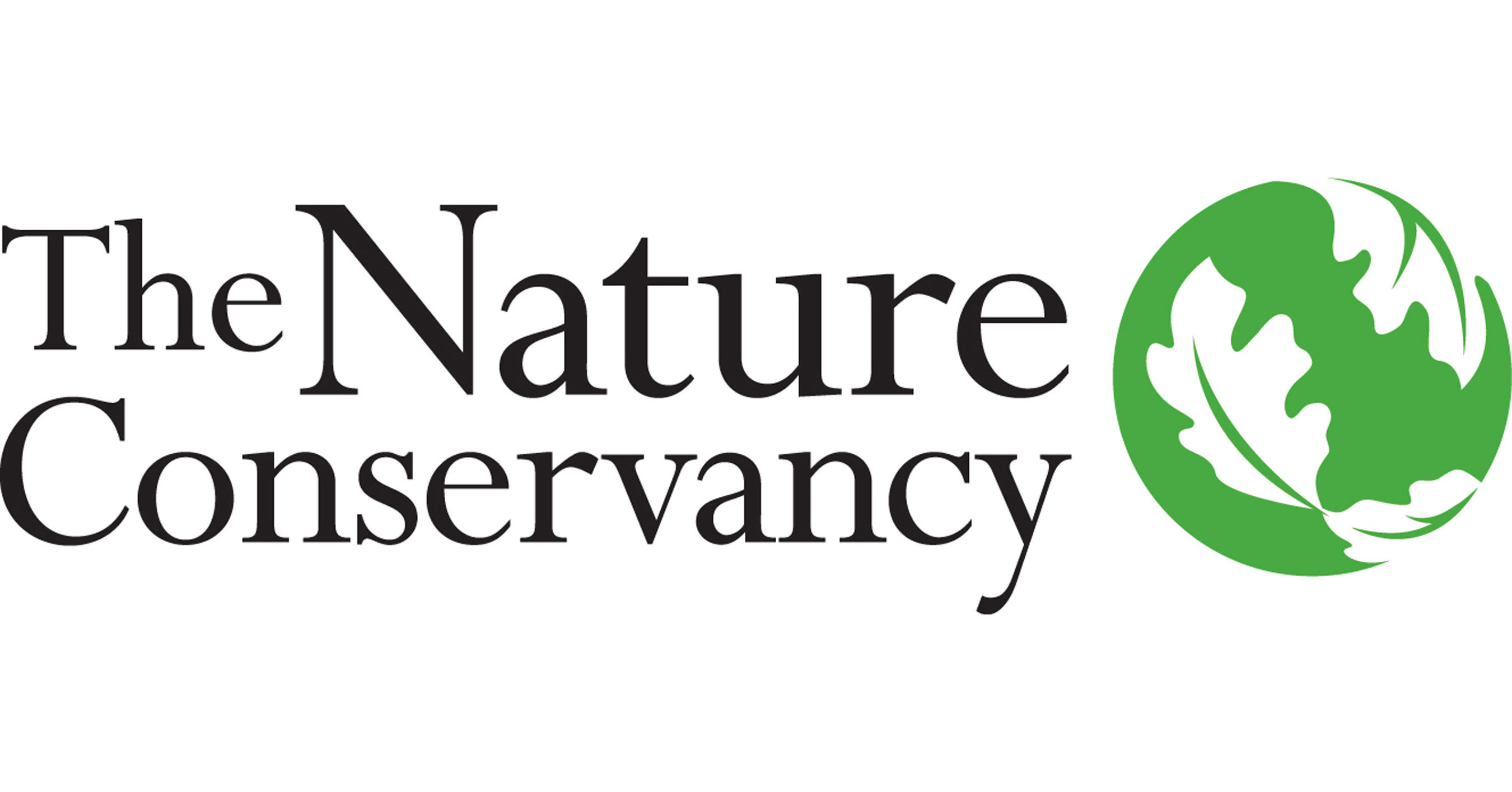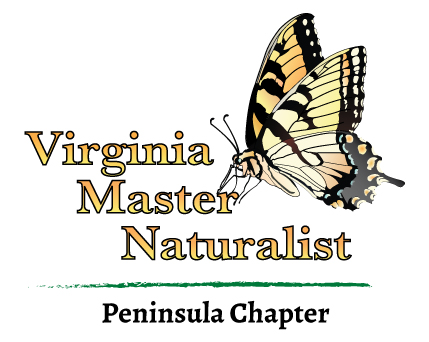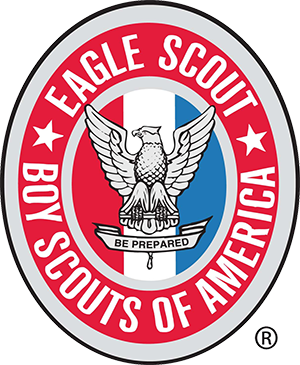What’s the Buzz?
In fall 2019, The Mariners’ Museum and Park expanded its mission of connecting people to the world’s waters by building a pollinator garden. Nestled in a cozy green space near the Museum’s Business Entrance, the Bumblebee Learning Garden is an inviting destination for visitors to explore.
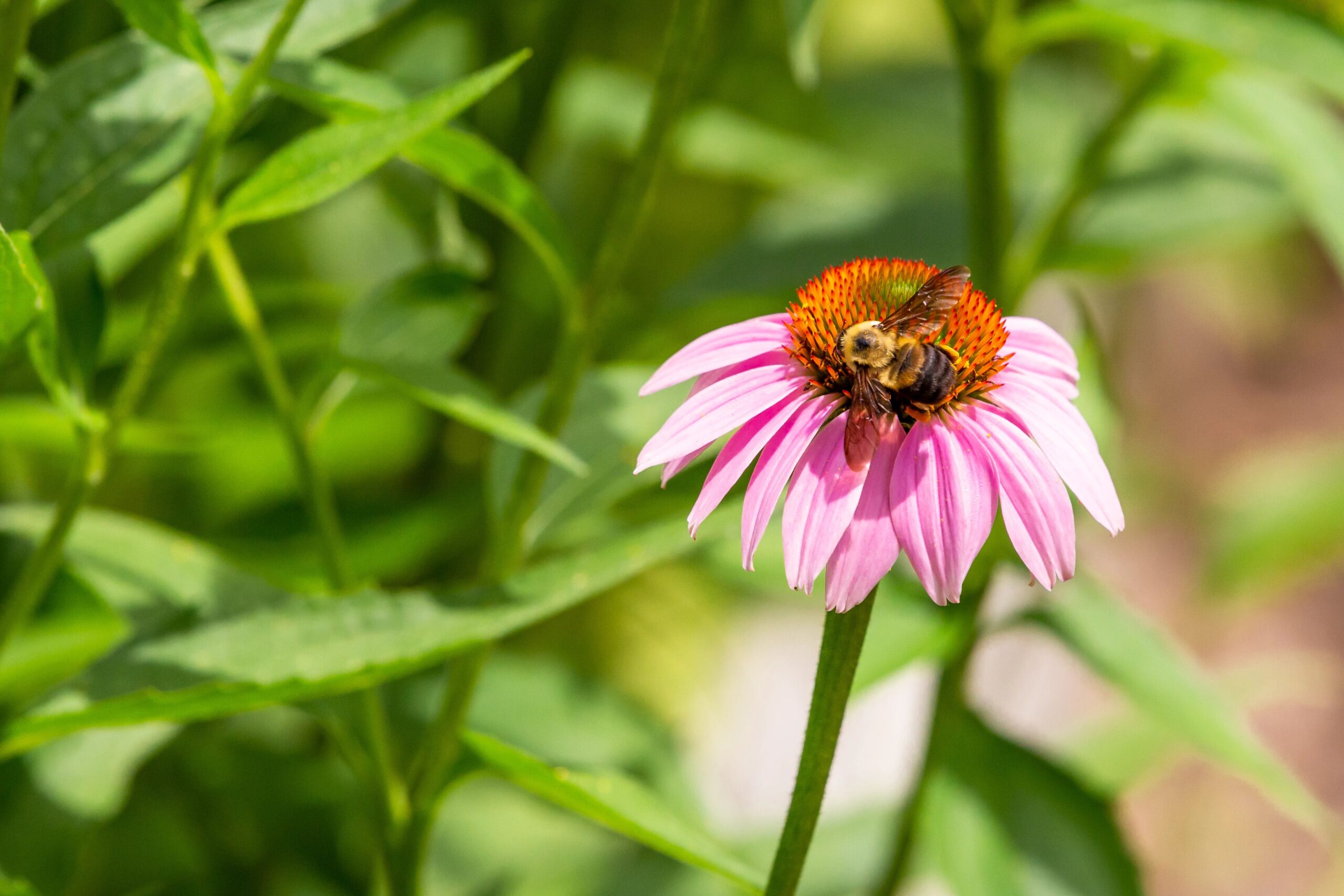
Garden Purpose
The Bumblebee Learning Garden’s dual purpose is to provide healthy habitats for local pollinators and to teach the community about the wonders of native, urban green spaces through curiosity and discovery.
The Museum’s mission of connecting people to the world’s waters is an essential element of the garden. Clean water is connected to nearly all aspects of healthy ecosystems, including a small pollinator garden. Healthy coastal environments, such as the Chesapeake Bay, often depend upon the conscious actions and solutions of maritime communities. We are connected to the health of the world’s waters and are an integral part of the story of hope and change for the planet. As environmental stewards, we are responsible for providing a safe habitat for all living creatures who call our Park and Lake home.

Serving Our Students through Outdoor Education
What’s in the Garden?
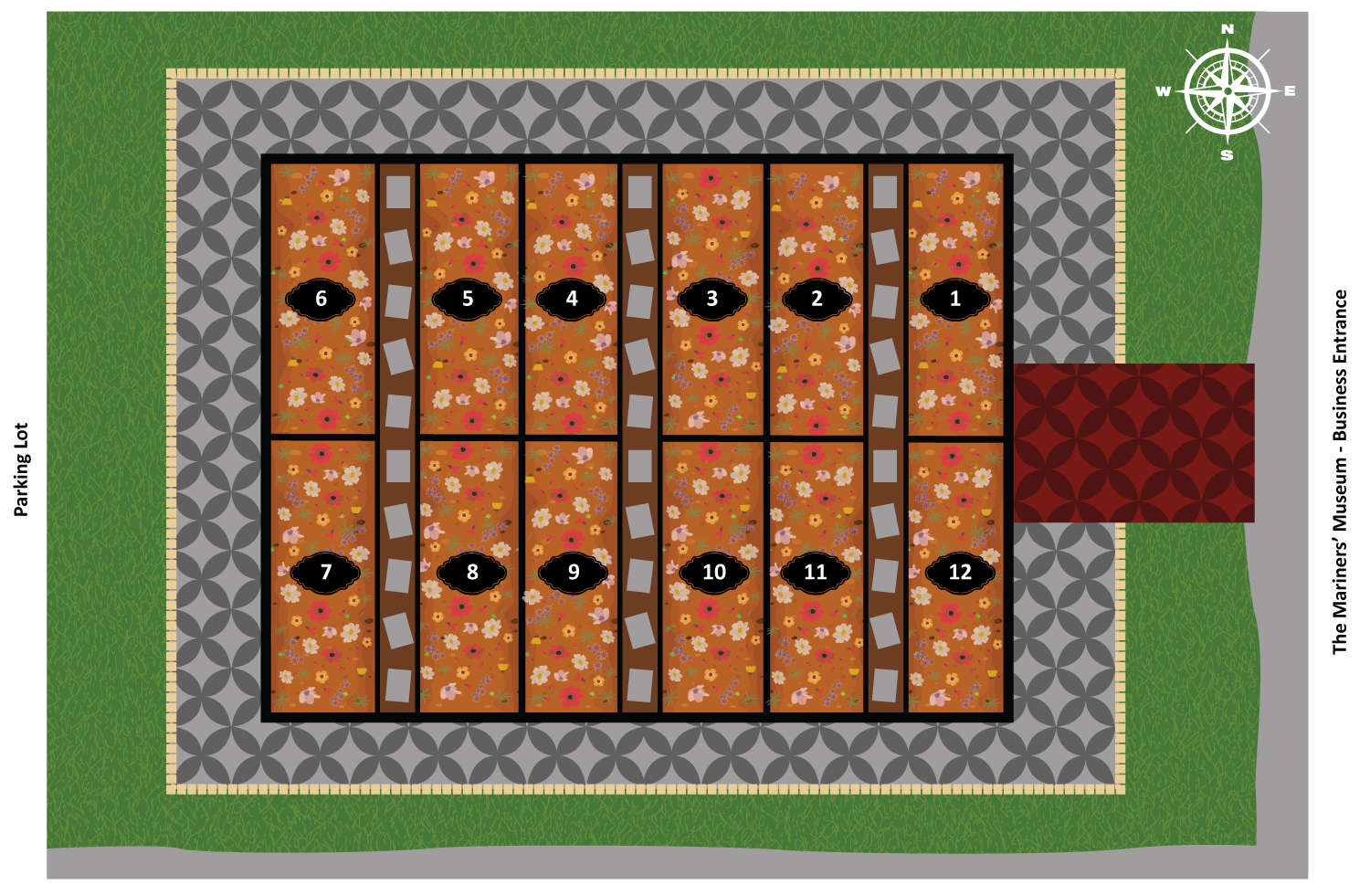
We are proud to share that the Bumblebee Learning Garden contains a variety of native plants.
Below is a gallery of plants currently in the Bumblebee Learning Garden.
Map Key
1
- Wild bergamot (bee balm)
Monarda fistulosa
2
- Small hairystem spiderwort
(Tradescantia hirsuticaulis) - Virginia spiderwort
(Tradescantia virginiana) - Blazing star
(Liatris spicata)
3
- Sweet goldenrod
Solidago odora
4
- Black-eyed susans
Rudbeckia hirta - Blue wood aster
Symphyotrichum cordifolium
5
- Hollow Joe-Pye weed
Eutrochium fistulosa - Coastal plain joe pye weed
Eutrochium dubium - Blue vervain
Verbena hesitate
6
- Aromatic aster
Symphyotrichum oblongifolium - Tall coreopsis
Coreopsis tripteris
7
- Red columbine
Aquilegia canadensis
8
- Calico beardtongue
Penstemon calycosus
9
- Purple coneflower
Echinacea purpurea - Blue wood aster
Symphyotrichum cordifolium
10
- White turtlehead
Chelone glabra - Great blue lobelia
Lobelia siphilitica - Downy skullcap
Scutellaria incana
11
- Tall larkspur
Delphinium exaltatum - Downy skullcap
Scutellaria incana
12
- Creeping phlox
Phlox stolonifera - Downy wood mint
Blephilia ciliata - Mountain mint
Pycnanthemum muticum - Wild bergamot (bee balm)
Monarda fistulosa
Butterflies in the Garden
Native plants were a must when we chose what to plant in the garden. Some plants have an additional benefit in that they are larval hosts for butterflies. Below is a list of the plants in the garden and which butterflies use them as larval hosts.
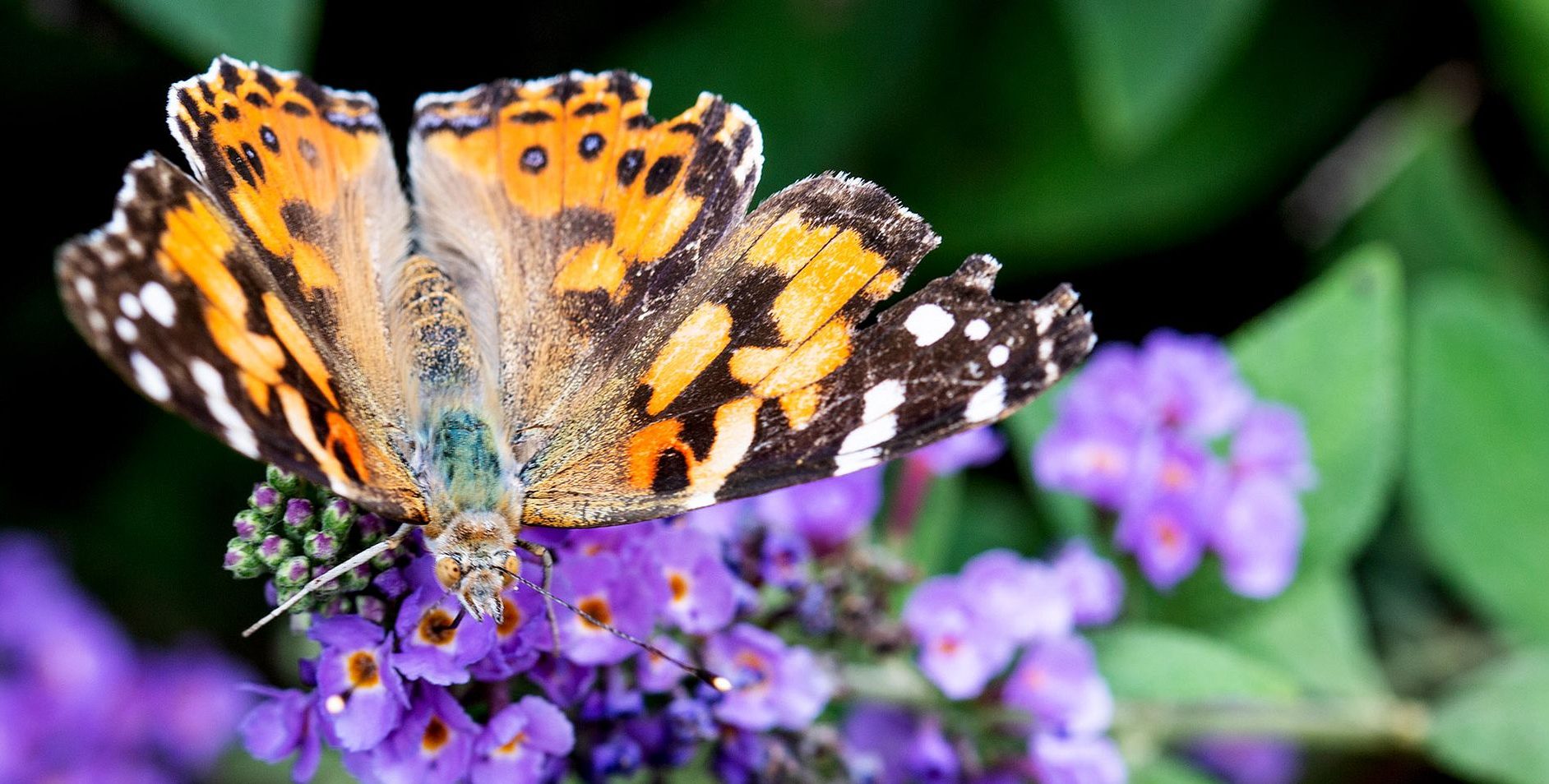
Check out the plants and the butterflies they host:
| Plants | Butterflies |
|---|---|
| Purple coneflower | Silvery checkerspot |
| Beardtongues | Common buckeye |
| Turtleheads | Baltimore checkerspot |
| Asters | Pearl crescent and silvery checkerspot |
| Spiderworts | Common buckeye |
| Joe pye weeds | Painted lady |
| Columbines | Spring Azur |
According to the Piedmont Environmental Council, our garden features seven larval host plants.
How to be Involved: Help Keep It Clean
Anyone can visit the garden, and that means we need you to help us keep the garden and Park in tip-top shape! We encourage visitors to come and enjoy the garden’s seasonal splendors, along with the beauty of the Park itself year-round. Remember, a lot of effort goes into creating and maintaining this garden and all other spaces around the Park and Lake. Please practice “Leave No Trace” principles (three are explained below), and consider the phrase “Take nothing but pictures, leave nothing but footprints.”
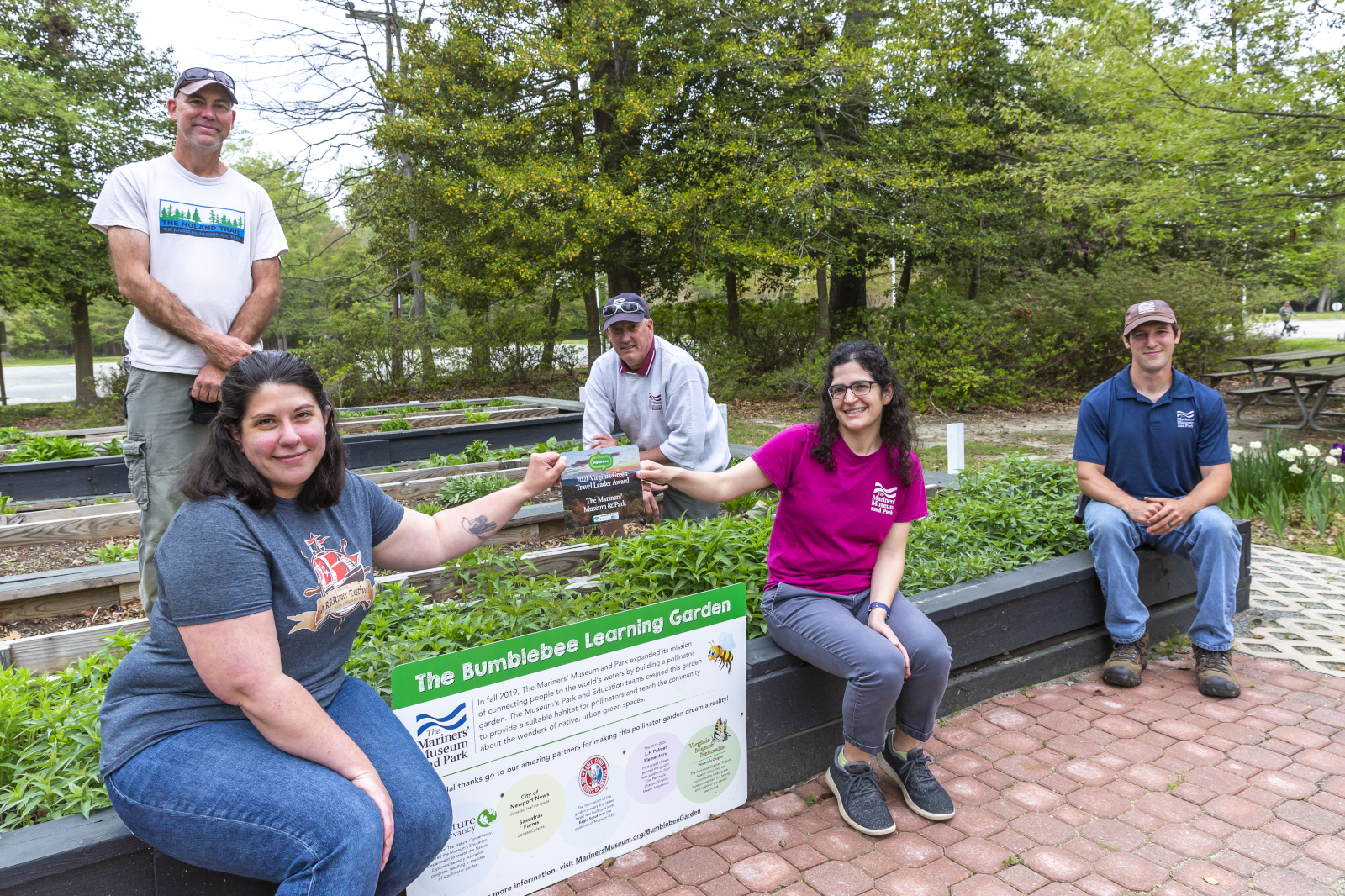
Garden News and Recognition
In spring 2021, The Mariners’ Museum and Park won the Virginia Green Travel Leader award for the Bumblebee Learning Garden.
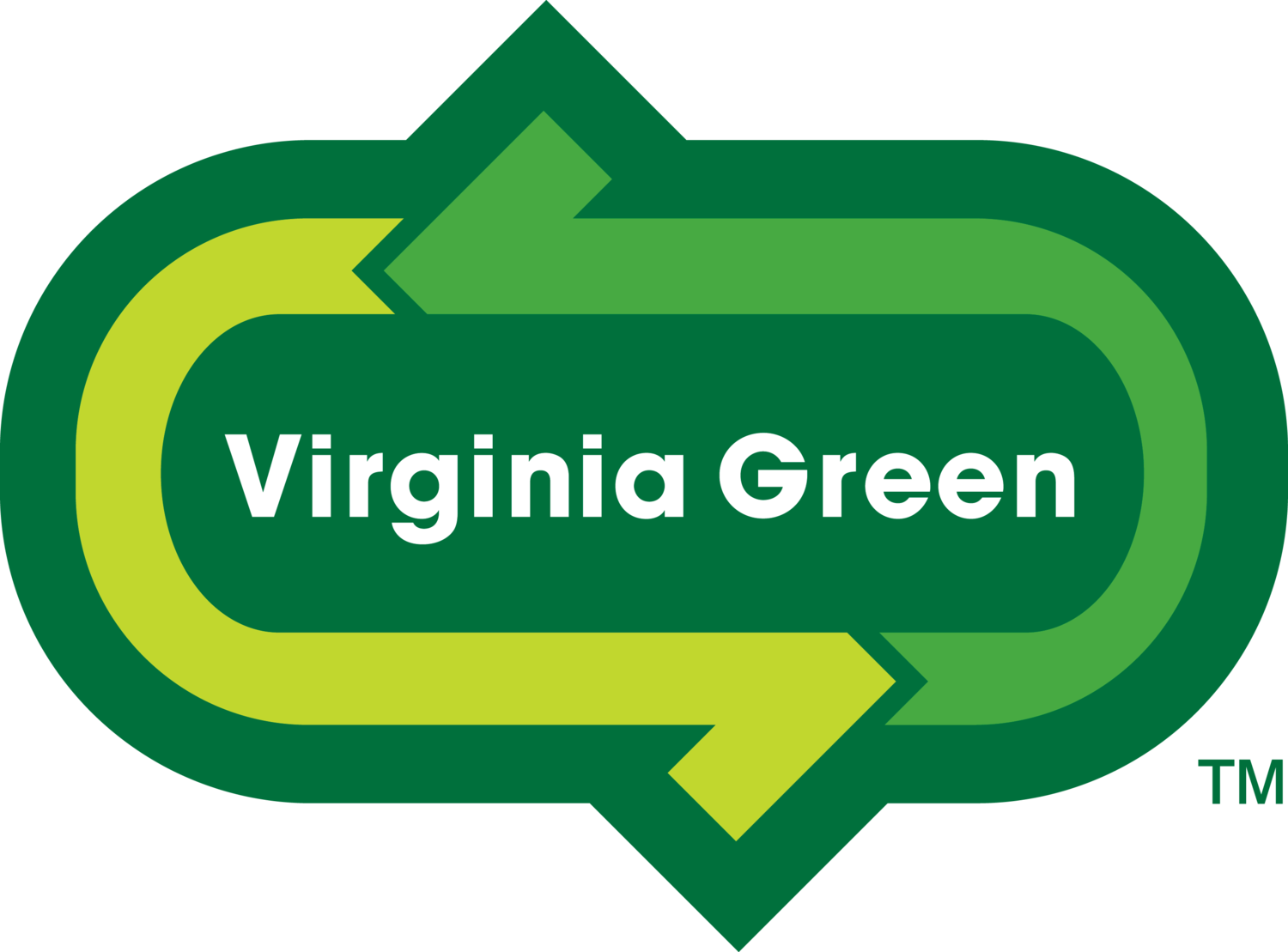
Learn more about the Virginia Green Travel Star awards.
Interactive educational sign
When you visit the Bumblebee Learning Garden, you will see our interactive educational sign. The sign was designed by Museum staff and funded by Dominion Energy.
The original artwork was done by local Virginia artists Mandy Louise-Houston and Betty Gatewood.
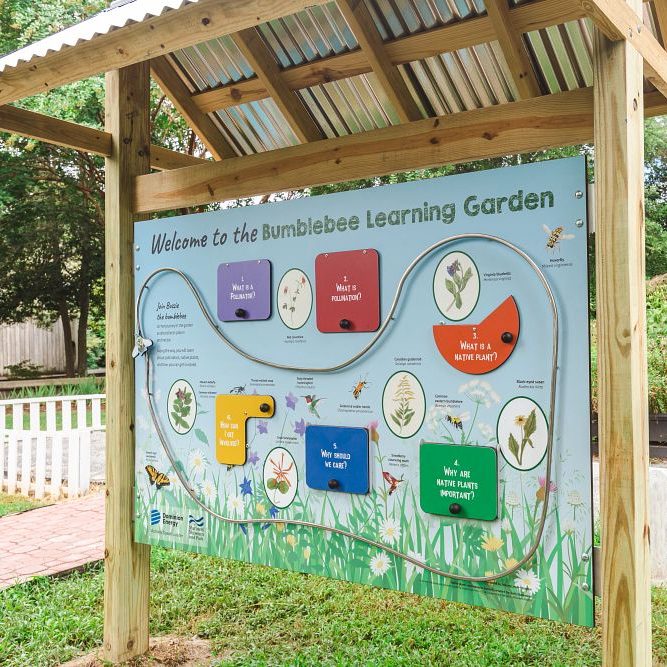
Contribute to Community Science
The Bumblebee Learning Garden’s purpose is to encourage curious discovery for all visitors. We invite you to take an active role in discovering and observing the natural phenomena in our Park by contributing to our community science efforts. Two of the biggest efforts for community science for general Park users are recording sightings on iNaturalist and eBird mobile apps. Please visit iNaturalist and eBird to contribute your sightings. You’ll be helping expand the Park’s data overall.
- Leave what you find – Please do not take anything from the garden, pick the flowers, or dig in the garden.
- Respect wildlife – Do not feed or harm wildlife, including pollinators, birds, turtles, deer, etc.
- Dispose of waste properly- If you create trash, please pack out the trash or find a nearby trash can. Leave the garden and Park cleaner than you found it. Please do not leave dog waste in the garden or around the Park.
If you need assistance in the garden, cross the street to the Business Entrance and ask our security staff for help or to answer any questions. You can also call: (757) 591-7796.
Serving Our Students through Outdoor Education
The Museum’s Education Team will continue to use the garden as a space for curiosity and hands-on exploration.
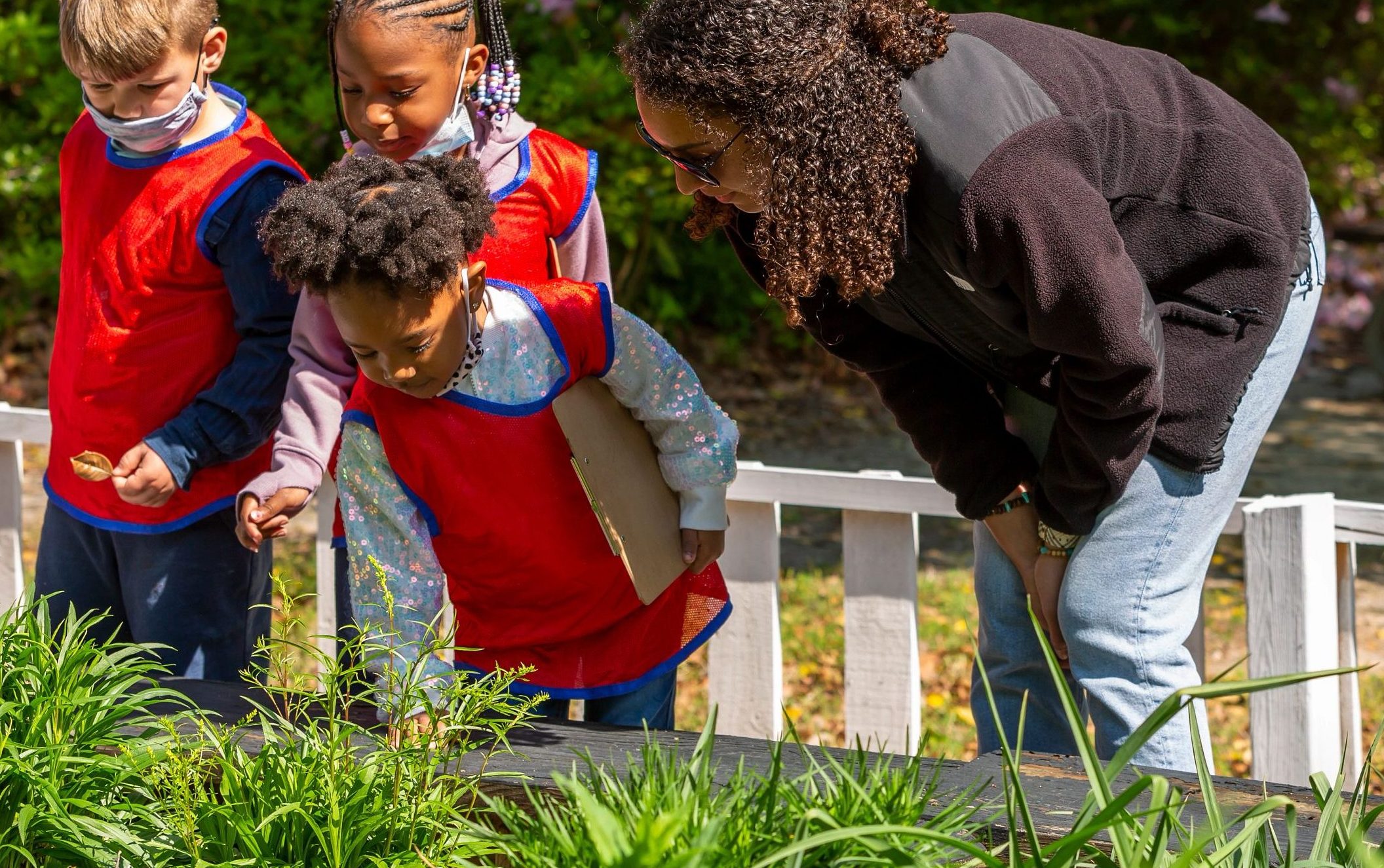
Four main goals drive our Student Enrichment Programs:
- Provide equal access to a museum and park experience for students across Hampton Roads
- Engage students multiple times in their academic career
- Improve learning outcomes for students
- Encourage a life-long appreciation for learning
The Bumblebee Learning Garden is a testament to these goals. The garden provides a space for students to learn how humans can make positive impacts on the environment by creating and sustaining native gardens and forests in urban areas. As they progress through school, elementary students who participate in the Nature Explorers! program will return to the Museum with their classmates or families and witness the garden’s growth. The garden is a fantastic green space and tool that will continue to help students appreciate the wonders of nature and learning, now and in the future. Expanding our selection of Park-focused programs is a top priority for the Museum’s Education team. Keep an eye out for more information on new outdoor education programs.
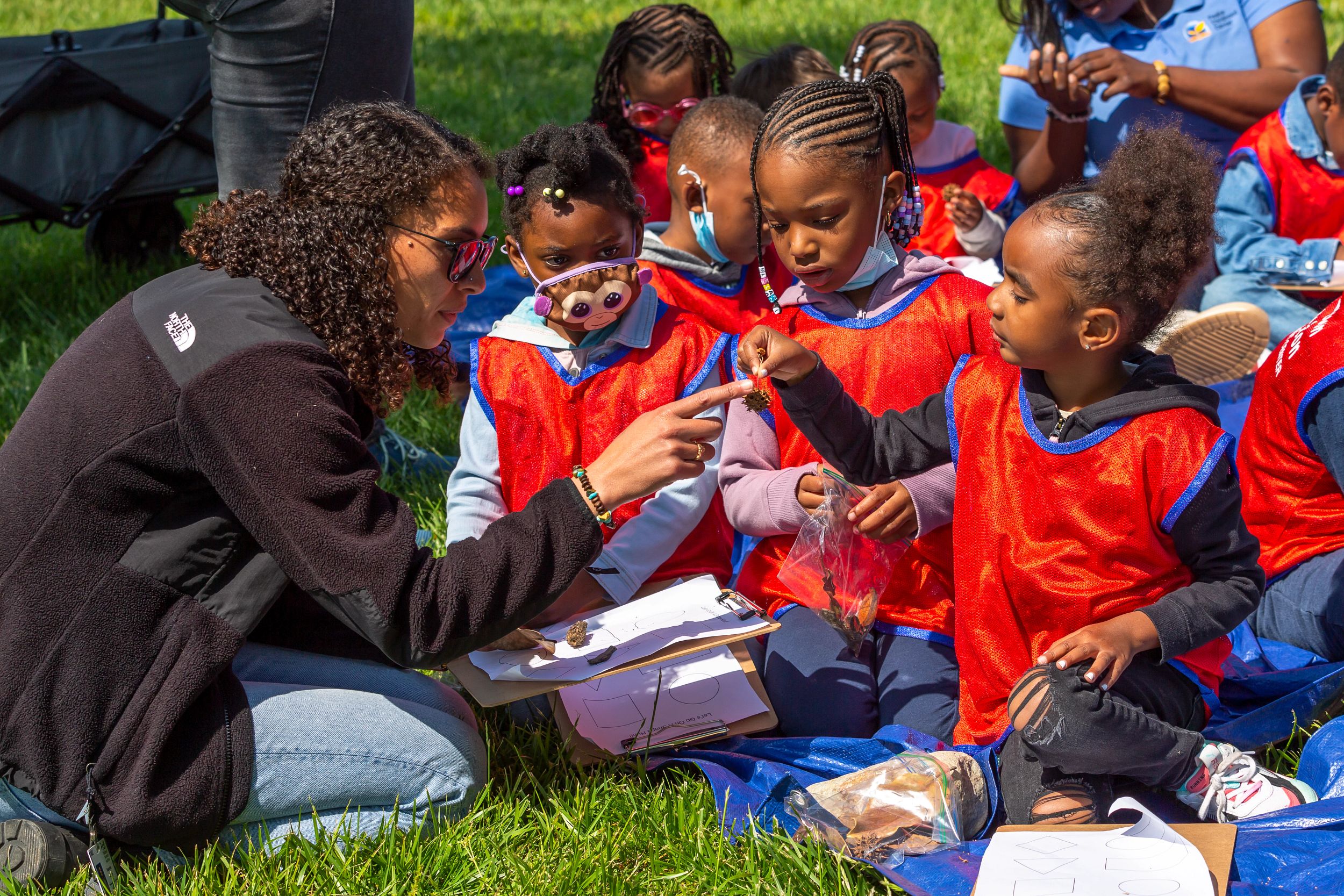
Let’s Explore Nature
Learn more about the outdoor educational enrichment programs we offer here at The Mariners’ Park.
Thank You to Our Partners!
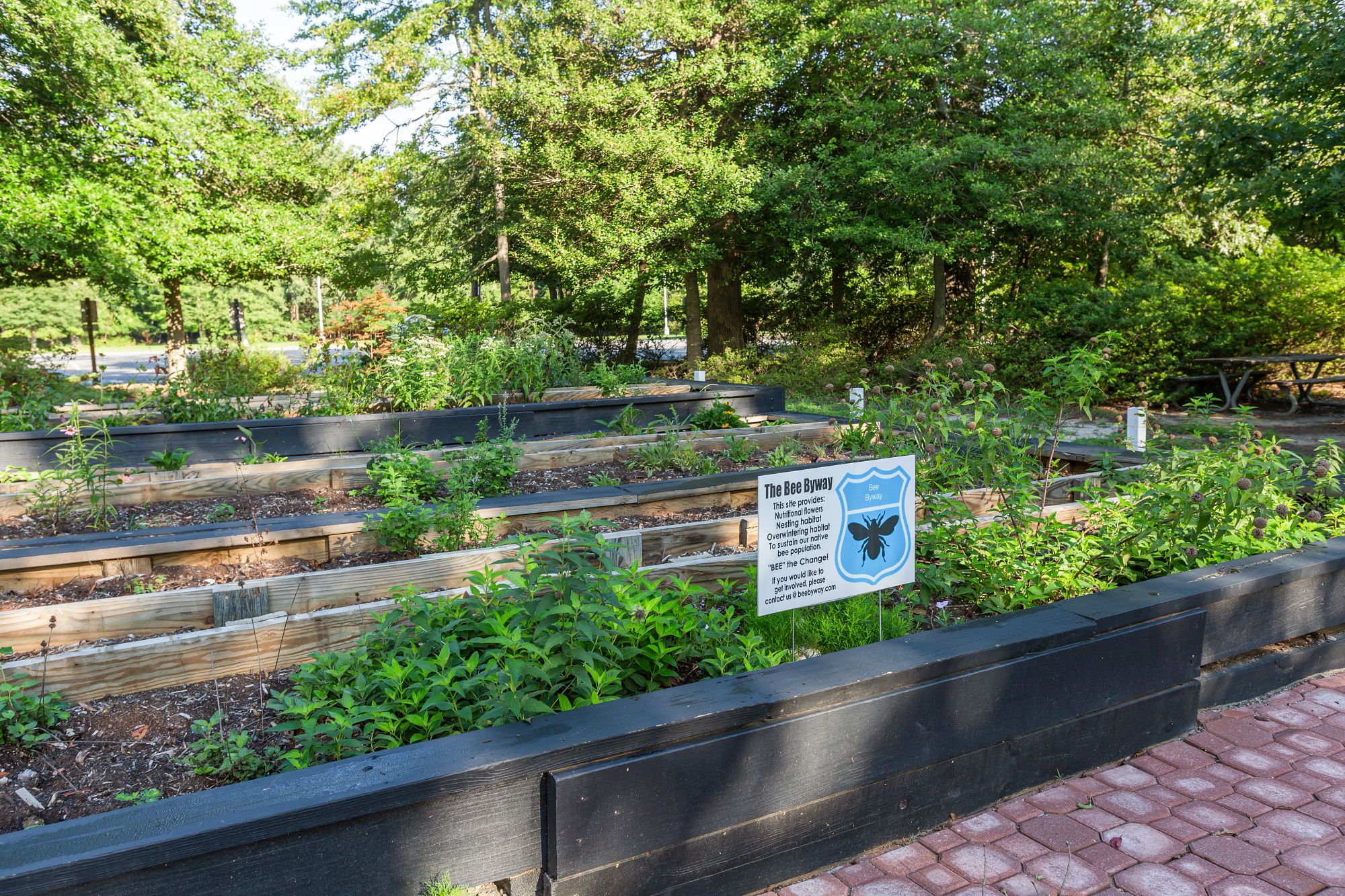
The Bumblebee Learning Garden is a collaborative effort between The Mariners’ Museum and Park and several national, state, and local community-focused organizations.
The Nature Conservancy gave The Mariners’ Museum and Park a grant to start the garden project. An Eagle Scout sourced new materials locally from donors and sponsors and utilized upcycled materials from The Mariners’. The Scout worked with The Mariners’ staff and volunteers to build the garden in the fall of 2019. Sassafras Farms donated plants, and the City of Newport News donated the rich leaf compost. Third graders from the 2019-2020 class at Palmer Elementary planted the garden with help from Peninsula Master Naturalists. A grant from Dominion Energy funded our interactive garden sign and overall garden improvements in 2021-2022.

